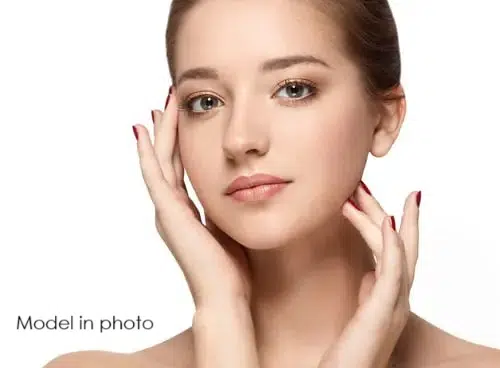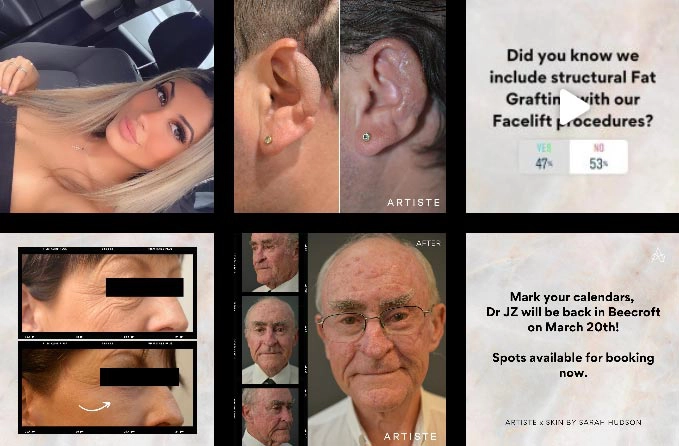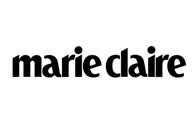6 Skin Tightening Treatments For Firmer, Youthful-Looking Skin
Model featured in photography

Ever noticed that youthful glow seems to fade a little bit with each passing year?
Maybe you’ve caught a glimpse of yourself in the mirror and wished your jawline had a bit more definition, or perhaps a touch of laxity has settled around your eyes.
If so, you’re not alone! Many of us experience a natural loss of skin elasticity and collagen production as we age, leading to the visible signs of wrinkles and sagging.
That’s where skin tightening treatments come in. These procedures and products can help to combat these concerns, promoting a firmer, more youthful appearance.
This article will guide you through some of the most popular and effective skin tightening treatments currently available. We’ll explore both professional and in-clinic options, as well as, at-home solutions.
Energy-Based Skin Tightening Treatments
#1. Radiofrequency (RF) Microneedling
RF microneedling combines two powerful technologies. Tiny, insulated needles penetrate the skin to a specific depth, delivering radiofrequency energy precisely where it’s needed.
This controlled thermal energy stimulates collagen production, improving skin elasticity and firmness over time.
Benefits of RF Microneedling include:
- Reduced fine lines and wrinkles
- Better skin texture and tone
- Tightening of mild to moderate skin laxity
- Can address acne scarring and enlarged pores
However, this treatment doesn’t suit those with active acne or skin infections. Results are also not immediate. Improvements will appear over several weeks to months, depending on the number of sessions.
#2. Focused Ultrasound
The treatment uses focused ultrasound energy stimulating collagen production deep within the skin’s layers. The heat energy bypasses the epidermis (outermost layer) and the dermis (thick layer containing collagen and elastin fibres).
Instead, it targets the Superficial Musculoaponeurotic System (SMAS). This is a structural layer of fibrous tissue that acts as an anchor for the facial muscles and deeper tissues.
This is a good skin tightening treatment for people with mild-to-moderate skin laxity and are looking for non-invasive treatments with noticeable results. The full lifting effect gradually develops over several months as new collagen forms.
#3. Radiofrequency (RF) Skin Tightening
Unlike Ultherapy, RF Skin Tightening focuses on the dermis layer. It addresses common signs of ageing and loose skin and still offers the heat stimulation needed to trigger the production of collagen fibres.
This treatment involves a handheld device with a mild heat sensation that feels comfortable for most patients. Topical anaesthetic may also be used for additional comfort. It’s non-invasive, effective for fine lines and wrinkles, and provides a skin lifting effect, albeit subtle.
Topical Skin Tightening Treatments
#4. Medium-To-Deep Strength Chemical Peels
Chemical peels use acidic solutions of varying concentrations to achieve different results. Medium to deep-strength peels cause controlled thermal damage to the epidermis This triggers the skin’s natural healing processes, stimulating new cell growth and a boost in collagen production.
Lighter peels focus primarily on exfoliation and improving the skin’s surface texture and radiance. However, medium to deeper-strength peels offer skin tightening benefits and are often used in conjunction with a facelift surgery for even greater skin rejuvenation results.
Surgical Skin Tightening Treatments
#5. Facelift
A facelift addresses late-stage skin ageing in the face and neck. The procedure is invasive and therefore, has risks and complications associated with it.
A surgeon typically repositions the underlying muscles and tissues in the facial area, while removing the excess skin. The result is a smoother, tighter, and more youthful-looking appearance.
Several different types of facelifts exist, each having unique advantages and incision techniques. Some common approaches include:
- Deep Plane Facelift: Targets the deeper SMAS layer for a more significant and longer-lasting lifting:
- High-SMAS Facelift: This is a variation on the deep plane technique. It offers excellent rejuvenation in the midface area.
- Facelifts can be tailored, for instance, on the lower face and neck only. Proper and thorough consultation with an experienced and licensed plastic surgeon is vital so you achieve your ideal outcome.
#6. At-Home Skin Tightening Treatments
Professional treatments may offer powerful skin tightening results, several at-home options can support your skincare routine and help address mild to moderate skin laxity over time.
At-home radiofrequency or RF devices use gentler energy than professional treatments to stimulate your skin’s natural healing. With regular use, you may observe subtle improvements in tightness and texture. They’re not an end-all-be-all approach to skin tightening, but they can complement occasional in-clinic techniques well.
LED light therapy devices can also yield comparable results. They use various light wavelengths that penetrate the skin and target specific concerns.
For example, red and near-infrared light are often used to rejuvenate skin. The mitochondria absorbs these light wavelengths, stimulating cellular energy production and triggering a cascade of beneficial reactions within the skin.
Further research is required to truly understand the skin tightening benefits of LED light therapy, but studies suggest that increased collagen production is a possible mechanism.
Discover Your Ideal Skin Tightening Treatment With Dr Jack Zoumaras
Whether seeking a dramatic transformation or a gentle way to maintain your skin’s youthful glow, there’s bound to be a perfect skin treatment for you.
If you’re considering Ultherapy, Chemical Peels, or Facelifts, consult with Artiste Plastic Surgery’s Dr Jack Zoumaras. An experienced and licensed cosmetic surgeon, he will be able to determine the most suitable plan for your individual skin concerns and desired results.
Disclaimer: At Artiste Plastic Surgery, our Plastic Surgeons led by Dr Jack Zoumaras have been trained to the highest possible degree. All plastic surgery has risks and it is always advised to get a second opinion. Risks are very real and we cannot guarantee any result. Recovery varies between 1-4 weeks. Results are illustrated as a guide only. All risks are managed and any need for revision surgery or complications (1-5%) can be managed by our specialist plastic surgeons. More information on our website.
Any statements on how you will feel is based on Level V Evidence:
Level V: How you will feel after plastic surgery varies between individuals, depending on psychological and physical factors. Our internal research is based on how patients in our practice feel after surgery.
The blogs are not a substitute for a medical consultation and do not form as part of the doctor to patient relationship.
SHARE THIS ARTICLE
Jun04
Mini Facelift vs Full Facelift: Pros, Cons, and Cost Differences
Disclaimer: At Artiste Plastic Surgery, our Plastic Surgeons led by Dr Jack Zoumaras have been trained to the highest possible degree. All surgery has risks and it is always advised ...
Jun04
Facelift Techniques Explained: Deep Plane vs SMAS vs Mini Facelift
Disclaimer: At Artiste Plastic Surgery, our Plastic Surgeons led by Dr Jack Zoumaras have been trained to the highest possible degree. All surgery has risks and it is always advised ...
ABOUT ARTISTE
Artiste Plastic Surgery is an Award Winning Specialist Plastic Surgery practice led by internationally trained Dr. Jack Zoumaras, Plastic Surgeon and Peer Reviewed Face Surgeon
Artiste offers the latest Cosmetic Surgical Procedures of the Face, Breast and Body, inspired from leading centres around the world.
STAY IN THE LOOP
Enter your email address below to receive updates on new articles and VIP access to promotions and special offers.
FOLLOW US ON INSTAGRAM










